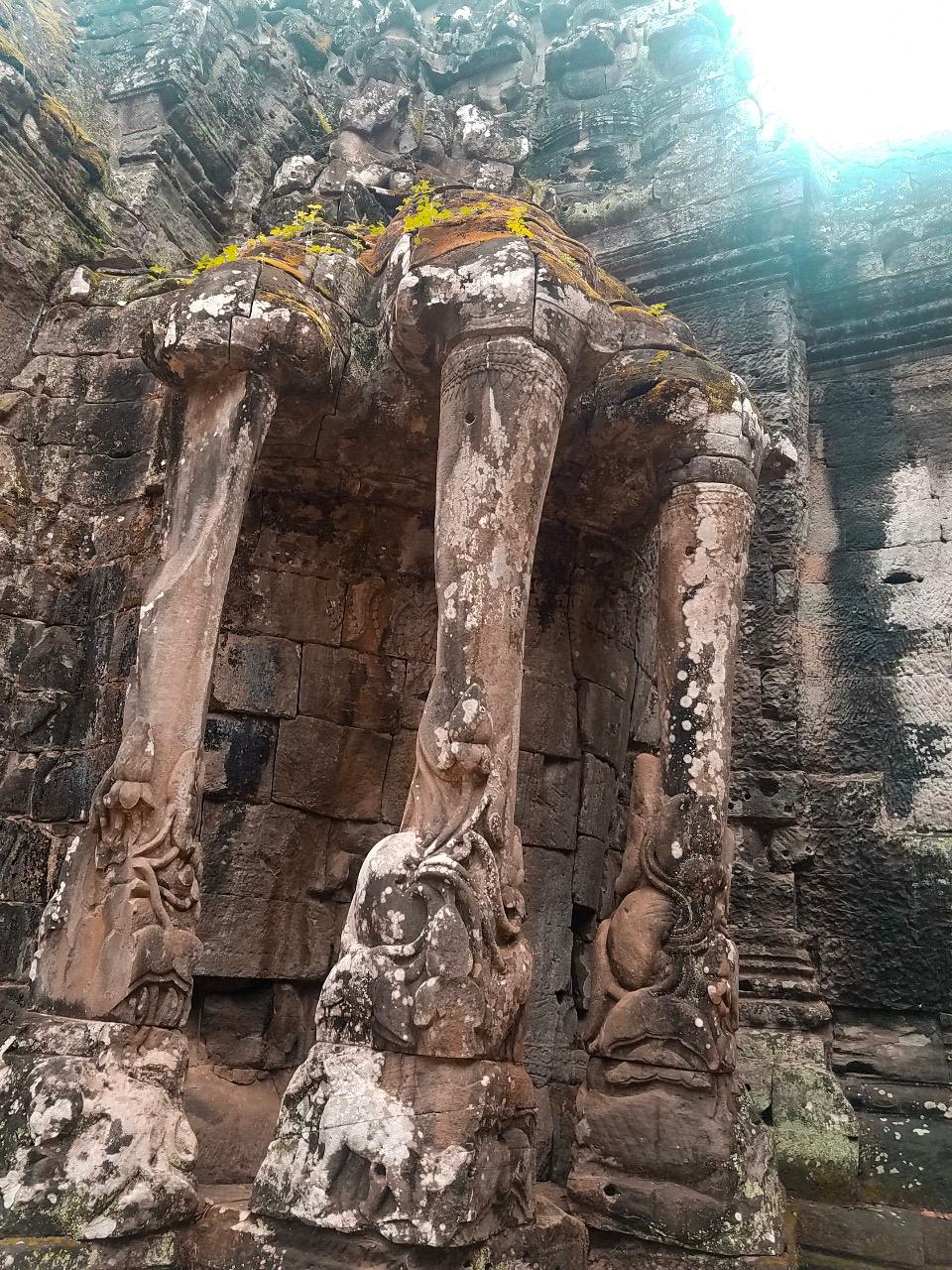The Gate of Angkor Thom in Cambodia is more than just an entrance; it serves as a captivating portal to the past, showcasing the artistic and architectural brilliance of the Khmer Empire. This monumental structure, built in the late 12th century, is one of five gates that provided access to the ancient city of Angkor Thom, the last capital of the Khmer Empire under King Jayavarman VII.

A Masterpiece of Artistry
Adorned with intricate carvings, the gate features remarkable depictions of mythical creatures, deities, and historical scenes that reflect the spiritual and cultural beliefs of the Khmer civilization. Among these carvings, the most prominent is the Churning of the Ocean of Milk, a symbolic representation of Hindu cosmology that illustrates the creation of the world and the eternal struggle between good and evil.

Symbolism and Craftsmanship
Each detail in the stone conveys a fragment of history, telling tales from centuries gone by. The craftsmanship involved in creating these carvings exemplifies the advanced skills of the Khmer artisans, whose work continues to inspire awe today. The detailed expressions of the figures and the dynamic compositions of the scenes invite viewers to engage with the narratives depicted, further enhancing the gate’s significance as a cultural artifact.
Historical Significance
Angkor Thom, which translates to “Great City,” was constructed as a testament to the power and sophistication of the Khmer Empire. The gate itself is flanked by enormous stone faces believed to represent Avalokiteshvara, the Bodhisattva of Compassion. These faces not only serve as guardians of the city but also embody the spiritual essence of the community, reinforcing the connection between the sacred and the mundane.
Political and Religious Context
The construction of Angkor Thom marked a significant shift in the Khmer Empire’s political and religious landscape. Under Jayavarman VII, the empire embraced Mahayana Buddhism, leading to a flourishing of artistic expression that is evident in the gate’s design. This transformation reflects the empire’s commitment to both religious devotion and architectural innovation, underscoring the significance of Angkor Thom as a political and cultural hub.
Journey Through Time
Today, as visitors pass through this magnificent gateway, they are not merely crossing a threshold; they are stepping into a narrative that spans centuries. Who might have walked through this gate in its prime? Perhaps merchants bearing exotic goods from distant lands, pilgrims seeking spiritual enlightenment, or royal envoys delivering messages from the king.

The Lives Intersecting at Angkor Thom
Each individual carried their own story, contributing to the rich tapestry of life in Angkor Thom. The gate served as a witness to countless interactions and exchanges that shaped the community. Its stones, worn by time, have absorbed the echoes of laughter, prayers, and the bustling activity that once defined this great city.
Conclusion
The Gate of Angkor Thom stands as a monumental reminder of the Khmer Empire’s enduring legacy. It invites us to ponder not only the artistry that crafted its beauty but also the lives that intersected within its embrace. As we explore this historical marvel, we are left to wonder about the countless stories etched into the very stones that have withstood the test of time. The gate remains a powerful symbol of cultural resilience and a testament to the Khmer Empire’s remarkable contributions to art, architecture, and spirituality.
